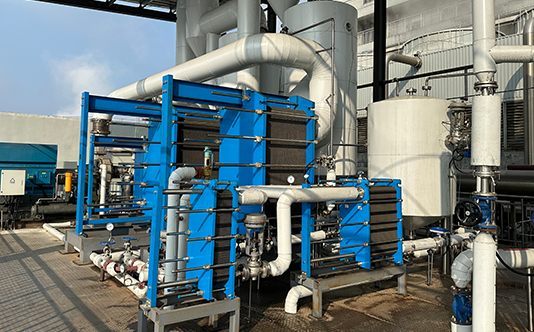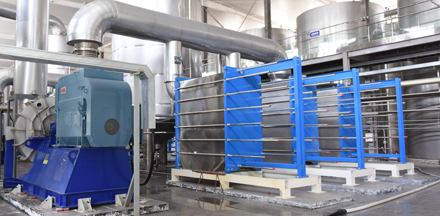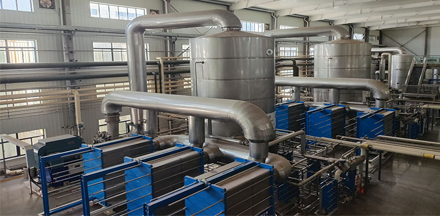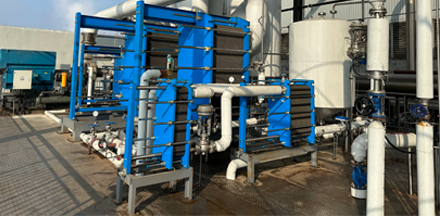Multiple effect evaporation is abbreviated as MEE. Multiple effects are relative to single-effect, which has only one effective evaporator, while multiple effects have multiple evaporators; The biggest difference is that the single-effect steam is directly condensed, while the secondary steam of the front effect body of the multi-effect is continuously utilized to save energy consumption. Multi-effect evaporation is the main means of energy saving. Generally speaking, the more effects there are, the better the steam economy will be. Generally, three-effect and four-effect are more common. Multi-effect evaporators are divided into tube-type and plate-type multi-effect evaporators in terms of form, and there are also differences in evaporation types such as falling film evaporation, rising film evaporation, and co-current and counter-current evaporation.



The most prominent feature of multi-effect evaporators is their high efficiency and energy saving. By fully utilizing the energy of secondary steam, the energy consumption of multi-effect evaporators is more than 30% lower than that of single-effect evaporators.

Multi-effect evaporators have a relatively compact structure and occupy a small footprint. Due to their multi-stage evaporator series connection, the equipment has a smaller volume, enabling better integration with other equipment in the production process and improving production efficiency.

Multi-effect evaporators can accommodate different materials and perform various process treatments.
Rich experience in process planning and equipment manufacturing
Customized Process Solutions
The project scope ranges from experimental testing of material parameters, to determination of process plans, to drawing, procurement, manufacturing, installation, debugging, training, and ultimately equipment delivery

Career
Professional
build Brilliant
Future
Proficient in industry/Achieving the future
